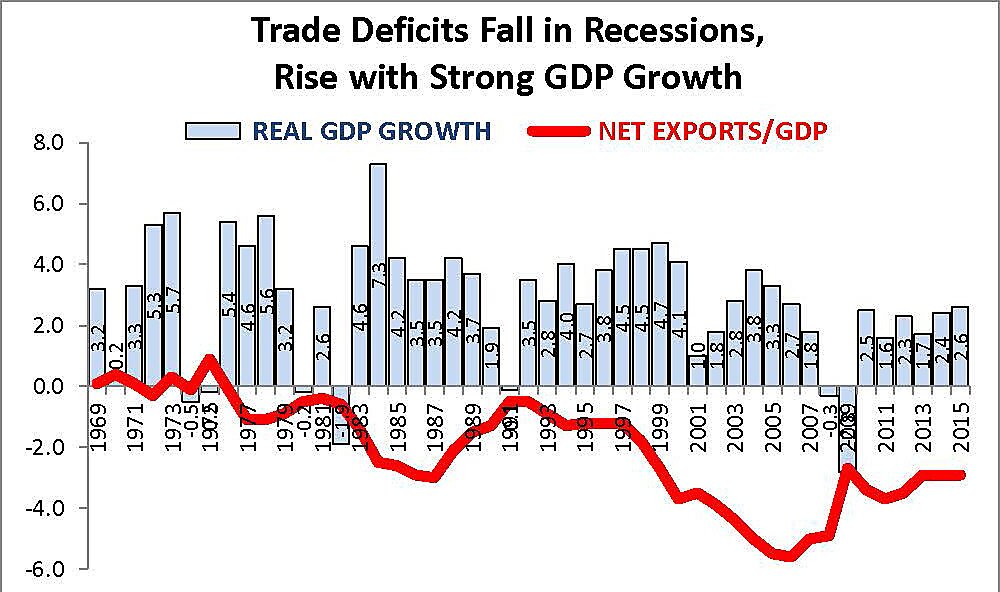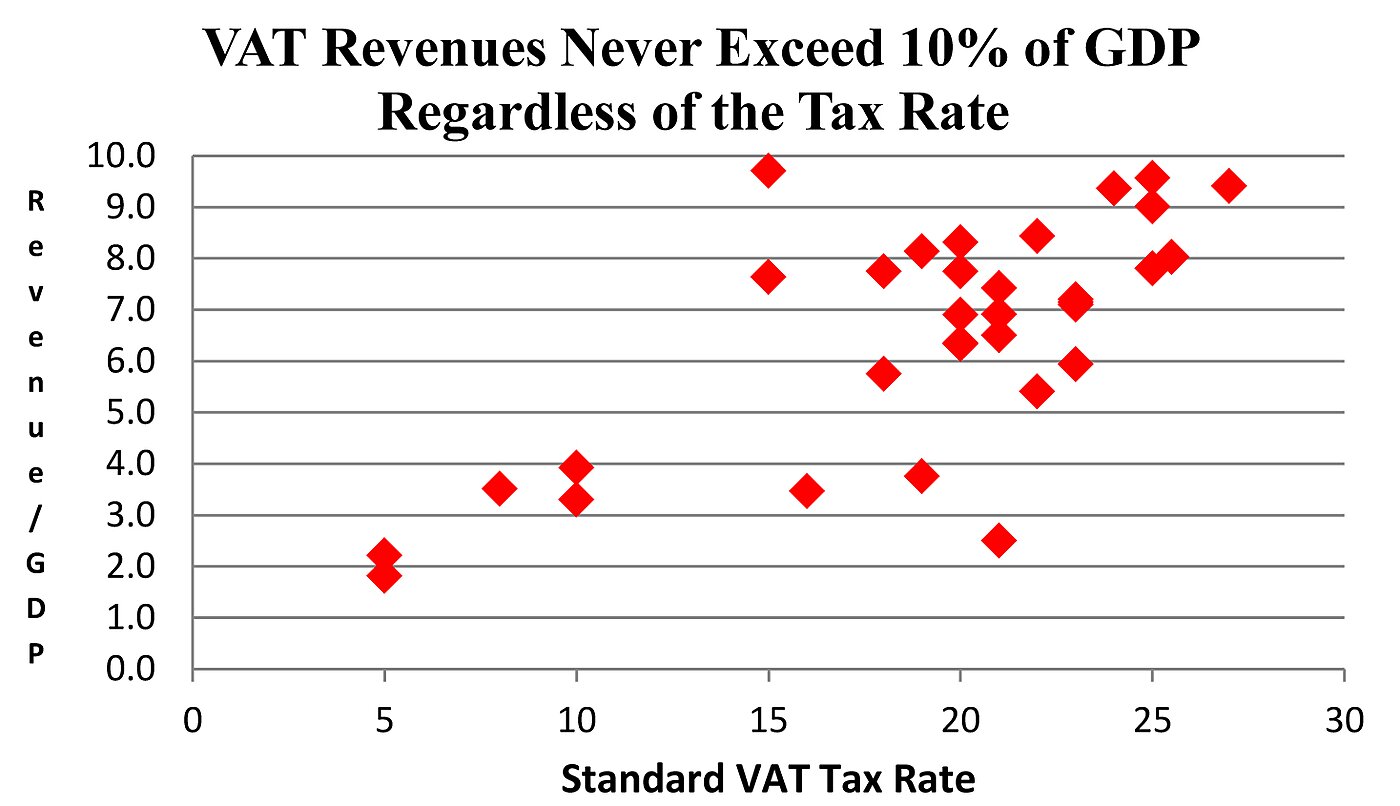A common narrative we hear from the news media this election cycle is that Donald Trump has become popular by tapping into anti-trade sentiment among blue collar workers “on the losing side of trade globalization.” The basic premises of this narrative are that (1) trade has harmed a large segment of the U.S. population and (2) those people are voting for Trump. But neither one of those premises is true.
The narrative has been fueled by a paper released earlier this year by economist David Autor, David Dorn, and Gordon Hanson titled “The China Shock: Learning from Labor Market Adjustment to Large Changes in Trade.” The paper has gotten a lot of attention from people on all sides of the trade policy debate.
The key finding of the paper is best summarized by this sentence from the abstract: “At the national level, employment has fallen in U.S. industries more exposed to import competition, as expected, but offsetting employment gains in other industries have yet to materialize.” The idea is that trade with China has been so disruptive that many people who lost their jobs due to increased imports from China have not been able to find new work.
Last week, the Wall Street Journal posted a long article tying the picture painted by the Autor, et al. paper to “disillusionment with globalization” and ultimately support for Donald Trump.
What happened with Chinese imports is an example of how much of the conventional wisdom about economics that held sway in the late 1990s, including the role of trade, technology and central banking, has since slowly unraveled.
The aftershocks are sowing deep-seated political discontent this election year. Disillusionment with globalization has fed one of the most unconventional political seasons in modern history, with Bernie Sanders and especially Donald Trump tapping into potent anti-free-trade sentiment.
It’s understandable that journalists would be attracted to the idea that Trump’s rise fits into broader storylines about economic change and inequality. But there are a number of reasons why the narrative just doesn’t make sense.
For one thing, trade isn’t actually the main driver behind the decrease in manufacturing employment, which began in 1979, long before China became a major U.S. trading partner. Part of the decline is due to trade but the vast majority is due to technological improvements that have enabled greater efficiency and automation. That’s why even as manufacturing employment has decreased, manufacturing output has continued to rise and is now at an all-time high.
Also, many of the places where a decrease in manufacturing employment can be tied to competition from Chinese imports are actually doing quite well economically. If some places affected by trade are doing well and some are doing poorly, that should give us a hint that trade (or other drivers of creative destruction and growth) is not itself responsible for a community’s inability to absorb economic shock.
My colleague Scott Lincicome has done an excellent job of explaining how the “China shock” is really a story about the lack of labor dynamism in the U.S. economy. Government policies, many of which differ from state to state, can significantly impact the likelihood that people will find new work after their job becomes obsolete. Policies that reduce dynamism in the labor market—minimum wage laws, protectionist occupational licensing, various taxes and regulations—make it more difficult for businesses and workers to match up after economic disruption.
So, the first premise of the narrative—that trade is responsible for economic decline in many American communities—is false.
But maybe people are supporting Trump because they falsely blame trade for their troubles. A new study using extensive survey data from Gallup blows that theory away. As the Washington Post reports:
Economic distress and anxiety across working-class white America have become a widely discussed explanation for the success of Donald Trump. It seems to make sense. Trump’s most fervent supporters tend to be white men without college degrees. This same group has suffered economically in our increasingly globalized world, as machines have replaced workers in factories and labor has shifted overseas. Trump has promised to curtail trade and other perceived threats to American workers, including immigrants.
Yet a major new analysis from Gallup, based on 87,000 interviews the polling company conducted over the past year, suggests this narrative is not complete. According to this new analysis, those who view Trump favorably have not been disproportionately affected by foreign trade or immigration, compared to people with unfavorable views of the Republican presidential nominee. The results suggest that his supporters, on average, do not have lower incomes than other Americans, nor are they more likely to be unemployed.
The study found that although Trump supporters may live in the sorts of places people consider to be harmed by trade, those supporters personally enjoy above-average economic performance. So the second premise of the narrative—that people’s economic troubles are leading them to support Trump—also appears to be false.
Let’s recap:
America’s manufacturing sector is thriving. Manufacturing employment has continued to decrease, because America has a modern, developed economy where we make more things than ever before using less labor and people have better employment options than working on a factory floor. However, as manufacturing jobs disappear (due mostly to increased automation) some people have struggled to find new work (due to various economic and policy realities unrelated to trade).
The Gallup analysis shows that this group of people is, in any event, not the demographic most represented among Trump supporters.
So, the question remains: “Why has Trump been able to gain support by falsely blaming trade with China for an economic decline his supporters have not experienced?”
The Gallup analysis has an interesting theory based on their data:
The evidence is in favor of contact theory is quite clear. Racial isolation and lack of exposure to Hispanic immigrants raise the likelihood of Trump support. Meanwhile, Trump support falls as exposure to trade and immigration increases, which is the opposite of the predicted relationship.
The idea is that Trump supporters are opposed to trade and immigration, not because they have had bad experiences with them, but because they have had very little experience with them.
It’s worth remembering that, although Donald Trump has been particularly vociferous in his condemnation of trade, there’s nothing especially new about the public’s willingness to buy into anti-trade rhetoric during an election or for politicians to take advantage of that.
Politicians are excellent at deflecting the blame for their own failed policies onto people or institutions that voters already mistrust. That may be foreigners (especially foreign governments) or corporations (especially multinational corporations). The success of Trump’s anti-trade message is most likely due to his willingness to take advantage of some people’s distrust of things that are foreign. He will have the most success among people for whom trade and immigration are most foreign. Much the same can be said of the popularity of Sen. Bernie Sanders’s brand of populist trade-bashing among the anti-corporate Left.
Trying to tie support for trade to economic factors is going to lead you to bad results, because all Americans benefit immensely from open trade. Trade has made Donald Trump’s supporters wealthier, and taxing imports for the sake of economic nationalism won’t help them, even if they used to work in a factory.

